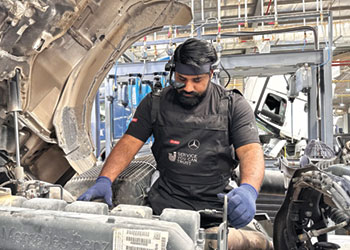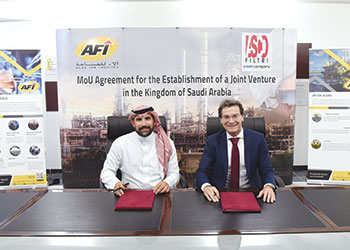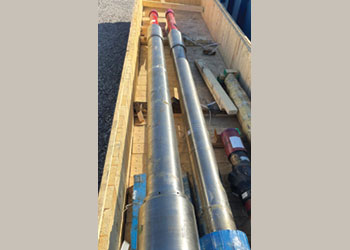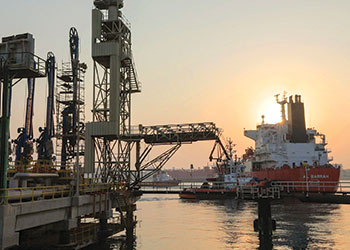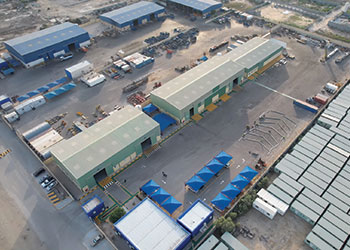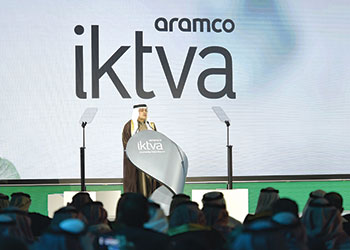
 The advantages of green hydrogen
The advantages of green hydrogen
Led by Saudi Arabia, the GCC has abundant renewable energy (solar and wind), and as such can be a pioneer in the green hydrogen economy, says a GPCA analytical report
The use of hydrogen in the GCC chemical industry is becoming increasingly favoured. Hydrogen is not only seen as a key enabler for countries and industries to hit their net-zero targets, but also a valuable opportunity for chemical companies to generate new, sustainable revenue streams.
The chemical industry plays a critical role in developing innovative solutions to enable the shift towards a green economy, and the GCC holds significant advantages in the production of clean hydrogen compared to other regions.
The Arabian Gulf region has the fundamentals, such as abundance in low-cost solar and wind energy resources, world-class infrastructure, established export markets and growing domestic demand.
However, there are still many challenges to overcome before green hydrogen can be fully commercialised.
 |
Blue hydrogen forecasted benefits in the GCC |
Hydrogen requires considerable transportation costs to supply to the GCCs large export markets – mainly in Europe and the Asia-Pacific region.
At present, GCC producers are dealing with these transportation costs by using renewable energy to convert green hydrogen to green ammonia (NH3), which is an active hydrogen carrier.
The Far-East is currently the main export destination for this product, where the ammonia is "cracked" upon arrival, and the hydrogen is then extracted for end-use.
The GCC’s hydrogen market is forecasted to grow at a CAGR of over 15 per cent between 2022-2050, and could result in potential annual revenues of $120-200 billion by 2050.
ADVANTAGES OF HYDROGEN
The GCC’s promising hydrogen economy is supported by initiatives from policymakers and companies alike to encourage widespread implementation in the region.
In recent years, demand for hydrogen has skyrocketed because of the increasing international push towards net-zero and decarbonisation, as well as the increasing need for sustainable and infinite energy sources needed to replace fossil fuels.
Hydrogen is infinite, environmentally sustainable, energy-dense, and when produced through renewable energy is "green" — making it both a perfect replacement for fossil fuels, and a critical part of the decarbonisation agenda.
In the GCC, large-scale technology improvements mean that green hydrogen production costs are expected to drop drastically within the next decade, with cheap renewable energy making an important contribution.
 |
GCC's green ammonia strategies |
Based on these changes, green hydrogen is likely to reach the point of commercial implementation in 2030.
By 2050, global green hydrogen demand is expected to reach over 530 million tonnes, which would be the equivalent of replacing 10 billion barrels of oil equivalent per year (37 per cent of current annual global oil production).
The GCC has an advantage in pioneering the hydrogen market for several reasons:
• The GCC’s infrastructure and technology for carbon capture, utilisation and storage (CCUS) is far more advanced compared to other regions.
• GCC countries are home to a vast number of salt caverns – these are tight caverns where hydrogen can be stored under pressure, which could potentially resolve the hydrogen storage problem (one of main reasons widespread hydrogen implementation hasn’t occurred yet).
• The GCC also has abundance in renewable resources (solar and wind), as well as some of the lowest costs of production of renewables.
GCC companies are currently involved in various hydrogen R&D projects for different applications of blue and green hydrogen. Nonetheless, more developments are required to advance technologies, such as reducing the cost of electrolysis, creating an infrastructure network, refining export business models, and satisfying growing domestic demand.
 |
Blue and green projects in the GCC |
• Blue hydrogen: Current (grey) hydrogen production in the GCC occurs via steam methane reforming (SMR), where natural gas is used as feedstock. Blue hydrogen is produced when CCUS is used with SMR.
The key challenge for producers is to scale up CCUS with the rising demand for clean hydrogen, despite it currently being more expensive.
Blue hydrogen is the intermediate step between carbon-intensive grey hydrogen, and zero-emission green hydrogen, and is easier to start with for oil and gas producers in the GCC, who can largely utilise existing infrastructure for its production.
The GCC possesses various advantages for the production of blue hydrogen, such as:
• Existing technologies and infrastructures for the transport of hydrogen and CO2 storage.
• CCUS mechanisms and hydrogen hubs because of the region’s well-equipped chemical industry.
• Abundance in natural gas.
• Geological advantage (flat deserts consisting of salt caverns for easy hydrogen storage).
The implementation of a blue hydrogen economy will also bring benefits to all GCC countries:
• Green hydrogen: The GCC has abundant renewable energy (solar and wind), and as such can be a pioneer in the green hydrogen economy.
Green hydrogen is on track to becoming a major component of the decarbonised future, especially in industrial processes (that is, industries with hard-to-abate emissions profiles, and even transport. The current focus is to achieve commercial-scale production of green hydrogen by 2030, but blue hydrogen is going to play a transitionary role in the interim. Such a transition is possible, especially in the GCC. However, there are still various cost and technological barriers that need to be addressed before the complete move to green hydrogen can occur.
• Green ammonia: GCC countries are currently leading the way for ammonia exports, where the ammonia is sent to Japan to be cracked. However, to move the green hydrogen supply chain, there are four main factors (Figure 4) the GCC must focus on to improve their international standing.
GCC producers should address all of these points to stabilise their green ammonia market and dominate global supply.
GCC countries are projected to become one of the lowest-cost regions globally for green hydrogen production
GCC countries are projected to become one of the lowest-cost regions globally for green hydrogen production.
CONCLUSION
The GCC has already made substantial progress towards a hydrogen economy. However, a lot more work is still required to accomplish the region’s net-zero and decarbonisation targets. In order to achieve this, GCC producers must make the most of the advantages they have both for blue and green hydrogen.
The GCC’s move towards a hydrogen economy will also contribute to various socio-economic benefits for the region, along with environmental benefits.
By gaining an early foothold in the global ammonia and hydrogen supply chain, the GCC can become a pioneer in the new hydrogen economy.
REFERENCES
https://blogs.worldbank.org/ppps/green-hydrogen-key-investment-energy-transition
https://www.chem4us.be/blue-green-gray-the-colors-of-hydrogen/
https://essentialenergyeveryday.com/solutions/renewable-energy/
*This article is based on the GPCA report titled, ‘The Rise of Hydrogen: Fuelling a Green Revolution’. The report, which was released in May 2023, provides a complete analysis of the current hydrogen market in the GCC region, as well as strategies for chemical producers and policymakers alike to lead the regional and global transition towards a hydrogen market.



















































































